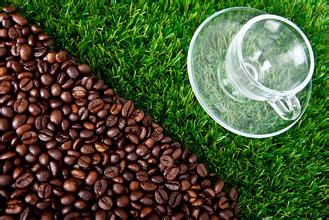Introduction to the varieties of coffee beans grown in the Brazilian coffee-producing region of SaoPaulo
Introduction to the varieties of coffee beans grown in the Brazilian coffee-producing region of SaoPaulo
Brazilian culture has multi-ethnic characteristics.
On November 15, 1889, General K. Fonseka launched a coup, overthrew the monarchy and established the United States of Brazil.
The Portuguese expedition established a colony in Pakistan in the 1630s.
The topography of the whole territory is divided into Amazon plain, Paraguay basin, Brazilian plateau and Guyana plateau, of which the Amazon plain accounts for about 1% of the country's area, making it the largest plain in the world; the Brazilian plateau accounts for about 60% of the country's area.
Brazil accounts for 50% or more of the world's coffee production, and is now close to 30%, but its impact on the world coffee, especially on coffee prices, is very important. for example, two frost disasters in 1994 caused a sharp rise in global coffee prices.
The largest coffee producer, with all grades and types of coffee, accounts for 1/3 of the global consumption and occupies a place in the global coffee market, although the natural disasters faced by Brazil are several times higher than those in other regions. But its acreage is enough to make up for it.
Other kinds of Brazilian coffee, such as Rio and Parana, can be produced in large quantities because they do not require too much care. Although the taste is rough, it is a kind of high-quality and inexpensive coffee, which has its own standards because it is distributed all over Brazil and varies in quality (NO.2~NO.8 according to the number of sundries, NO.13~NO.19 according to the size of beans, and six grades according to taste).
Brazil has seven states producing coffee and a total of 14 coffee producing areas, so it is full of diversity. If we pay attention to the information on the coffee bags, we may find that they come from
Sao Paulo (Mogiana, Centro-Oeste)
Many fine varieties can be grown in these coffee producing areas, such as Bourbon, Mundo Novo, Icat ú, Catua í, Iapar and Catuca í. Among so many varieties of coffee, you are sure to find one you like.

Important Notice :
前街咖啡 FrontStreet Coffee has moved to new addredd:
FrontStreet Coffee Address: 315,Donghua East Road,GuangZhou
Tel:020 38364473
- Prev

Taste treatment of Panamanian long-tailed cuckoo sun-tanned coffee shop an introduction to the characteristics of the French production area
Panamanian long-tailed cuckoo sun-dried coffee shop taste treatment characteristics of the area Manor introduced Alida farm famous beans are also his washed beans, taste clean, clear, with floral aroma, Alida farm is trying a variety of treatment methods, there are not only water washing treatment, but also sun treatment and honey-treated coffee beans, it is worth mentioning that Alida farm honey-treated coffee beans, combined with
- Next

Introduction to the flavor description, taste and price of Incht Pacamara coffee beans
Due to the flavor description characteristics of Hutchparkamara coffee beans, the price of the Pacamara plant is medium to high, short spacing between internodes, large wavy, dark green leaves, new leaves green or brown. The trunk is hard and stout, and the branches are broad. The coffee bean is very large, oval, about 1.03 cm in length, 0.71 cm in width and 0.37 cm in thickness.
Related
- Detailed explanation of Jadeite planting Land in Panamanian Jadeite Manor introduction to the grading system of Jadeite competitive bidding, Red bid, Green bid and Rose Summer
- Story of Coffee planting in Brenka region of Costa Rica Stonehenge Manor anaerobic heavy honey treatment of flavor mouth
- What's on the barrel of Blue Mountain Coffee beans?
- Can American coffee also pull flowers? How to use hot American style to pull out a good-looking pattern?
- Can you make a cold extract with coffee beans? What is the right proportion for cold-extracted coffee formula?
- Indonesian PWN Gold Mandrine Coffee Origin Features Flavor How to Chong? Mandolin coffee is American.
- A brief introduction to the flavor characteristics of Brazilian yellow bourbon coffee beans
- What is the effect of different water quality on the flavor of cold-extracted coffee? What kind of water is best for brewing coffee?
- Why do you think of Rose Summer whenever you mention Panamanian coffee?
- Introduction to the characteristics of authentic blue mountain coffee bean producing areas? What is the CIB Coffee Authority in Jamaica?

